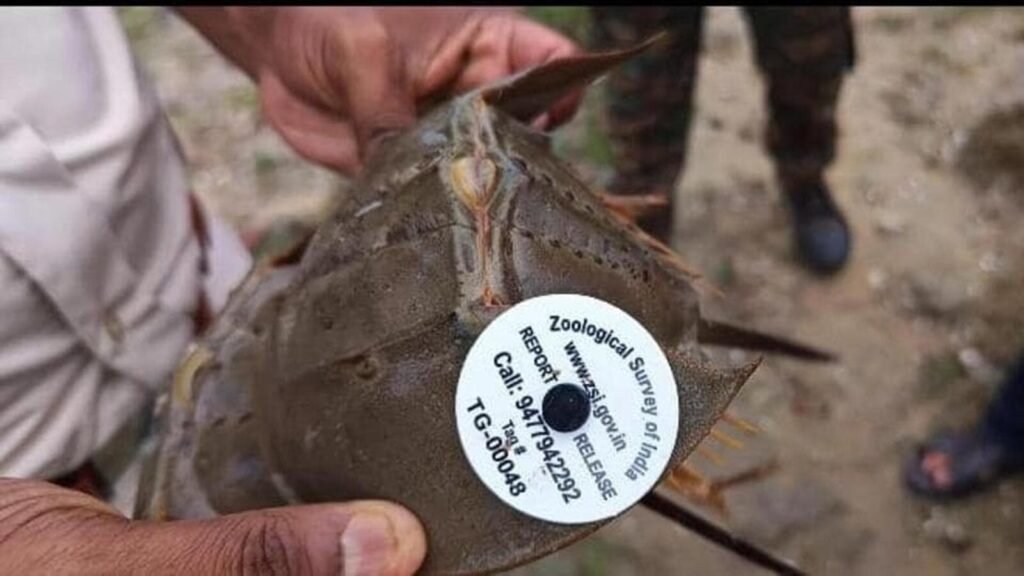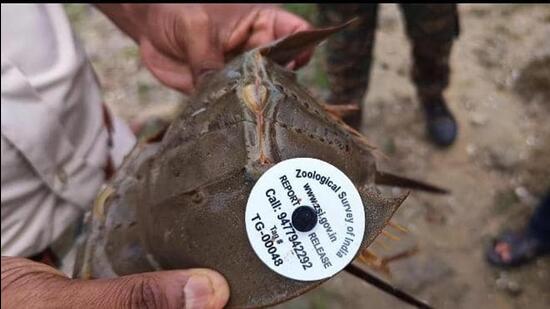
Aug 20, 2024 01:44 PM IST

Aug 20, 2024 01:44 PM IST
The Zoological Survey of India (ZSI) and the Odisha Forest Department have come together to tag horseshoe crabs along the coast of Odisha to understand the population and habitat utilization for its conservation and management.

A total of 12 horseshoe crabs were tagged for the first time in the Khandia muhan estuary of the Balasore coast by officials of ZSI and state forest officials. “India is home to two species of horseshoe crabs — Tachypleus gigas and Carcinoscorpius rotundicauda (mangrove) — and both the species are found along the northeastern coast of India, especially along the Odisha and West Bengal coast. This is an extremely important species. We need to come up with a conservation plan,” said Dhriti Banerjee, Director, ZSI adding that scientists will tag horseshoe crabs over the next three years in collaboration with State’s Forest Department.
ZSI senior scientist Basudev Tripathy said the plan involved tagging hundreds of crab to determine their population pattern, and threats to them.
“All the tags are marked with a serial number, mobile number and has Zoological Survey of India mentioned. Tags will help us to track the migratory routes of the marine species,” said Tripathy, scientist, ZSI at western regional center in Pune. “Destructive fishing practices are major threats to horseshoe crabs, and there are reports of illegal smuggling of the species from the Odisha and West Bengal coasts. Horseshoe crabs are a Schedule 2 species under the Wildlife Protection Act, 1972.”
BC Chaudhury, former wildlife biologist and scientific advisor of Wildlife Trust of India (WTI), said six pairs of tagged horseshoe crabs were released in the sea. “Tagging is most often conducted to obtain information on reproductive biology, movement and growth rate. The tagging will help us in studying the horseshoe crab’s migratory route and areas of foraging. Tagging data will also prove interconnection of horseshoe crab population in Odisha coast,” he added.
India is home to two species of horseshoe crabs, Tachypleus gigas and Carcinoscorpius rotundicauda and both the species are found sympatrically along the North-Eastern coast of India, especially along Odisha and West Bengal coast. Horseshoe crabs are one of the oldest living creatures on the Earth, and a valuable species medicinally.
ZSI official said the organization plans to propose to the Union ministry of environment, forest and climate change to conduct advanced research using modern techniques like satellite telemetry to gather more information about these fascinating creatures.
